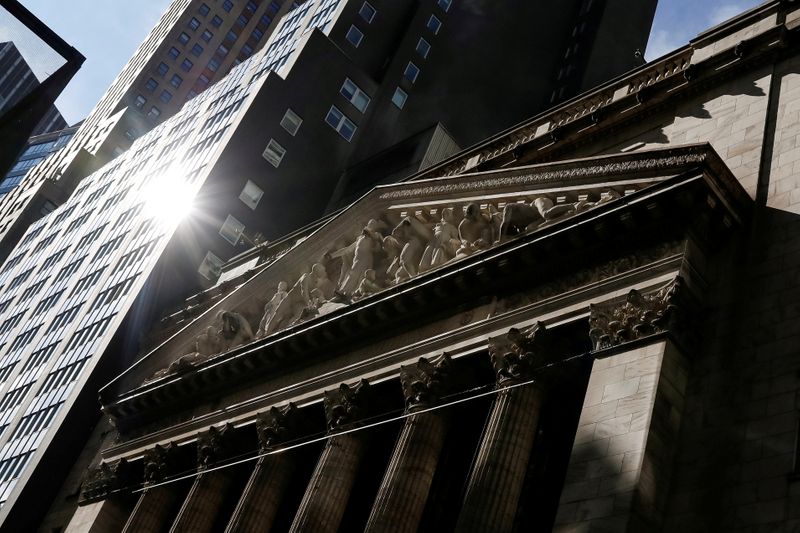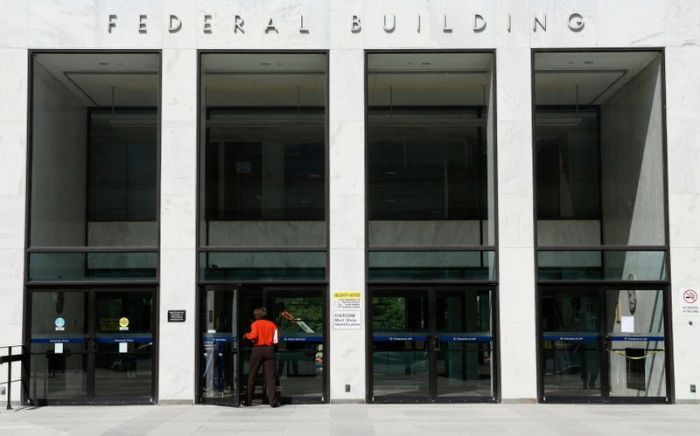NEW YORK (Reuters) -Investors are focusing on Treasury yields as a key factor in determining how stocks will fare the rest of the year, after a month in which equities notched their steepest losses since the coronavirus pandemic began.
The S&P 500 index posted its biggest monthly drop since March 2020 in September, while pulling back as much as 5% below its all-time high for the first time this year.
Stocks wobbled as yields on U.S. Treasuries shot to a three-month high, exacerbating worries in a market already unsettled by a nasty fight over the U.S. debt ceiling, the fate of a massive infrastructure spending bill and the meltdown of heavily indebted Chinese property developer China Evergrande Group. The S&P 500 is still up 16% this year.
“Investors are looking for a catalyst … and the catalyst that they are currently focusing on is the direction of interest rates,” said Sam Stovall, chief investment strategist at CFRA.
Yields, which move inversely to bond prices, are rebounding from historically low levels and their recent climb is widely seen as a sign of economic strength.
Their rally follows the Federal Reserve’s hawkish tilt at its monetary policy meeting last week. The central bank said it may begin tapering its $120 billion-a-month government bond buying program as soon as November and potentially begin raising rates next year, earlier than some were expecting.
Yet yield increases, such as the 27 basis point move logged by the 10-year benchmark note after the Fed meeting, could dim the allure of stocks. The 10-year yield was last around 1.47%, paring back gains toward the end of the week.
Stocks and bonds could take cues in the coming week from developments in Washington, where lawmakers continue to debate an infrastructure spending package, as well as next Friday’s monthly U.S. jobs report.
Among the indicators investors are using to gauge stocks’ future trajectory is the spread between the yields on two-year and 10-year Treasuries. Some view this as a barometer of whether the economy is slowing or overheating.
A spread of between zero and 150 basis points is a “sweet spot” for stocks, which has been consistent with an 11% annual return for the S&P 500, based on historical data, according to Ed Clissold, chief U.S. strategist at Ned Davis Research. The S&P 500 has averaged a 9.1% gain annually since 1945, according to CFRA’s Stovall.
That spread has recently widened and stood at around 120 basis points on Friday. When the spread exceeds 150 basis points, “that is when stocks tend to struggle,” Clissold said, historically equating to an annual S&P 500 return of 6%.
“Too steep of a curve implies that inflation is getting out of control and the Fed may have to tighten quickly,” Clissold said in a report this week.
The speed at which yields rise is also important, as is the economic and monetary policy backdrop, analysts at Goldman Sachs said.
In a recent report, the bank contrasted the latest rise in yields with a spike of 50 basis points earlier this year.
While the earlier rise reflected an improving economic outlook, now “economic growth is decelerating, the (Fed) is expected to announce the start of tapering at its November meeting, and our economists have downgraded China’s economic growth forecasts,” the bank’s analysts wrote.
Higher yields pressure stock valuations by increasing the rate at which future cash flows are discounted, a typical way to value equities. Such pressure is especially acute for tech and other growth shares whose valuations rely more on future profits.
The S&P 500 technology index fell 2% against a 0.9% drop for the overall index since last week’s Fed meeting. Weakness in the tech sector, which makes up over 27% of the S&P 500’s weight, and other tech-related shares, could spell trouble for the broader index, even as rising yields benefit economically sensitive stocks such as banks.
Many investors still see stocks as more attractive than bonds despite the rise in yields. The equity risk premium, which compares the earnings yield on stocks to the yield on the 10-year Treasury bond, currently favors equities, according to Keith Lerner, co-chief investment officer at Truist Advisory Services.
When that premium historically has been at the level it reached at Wednesday’s close, the S&P 500 has beaten the one-year return for the 10-year Treasury note by an average of 10.2%, Lerner said.
“A rise in yields, to a point, is healthy for the equity market,” said Matt Peron, director of research at Janus Henderson Investors.
(Reporting by Lewis Krauskopf; additional reporting by Noel Randewich in San Francisco; editing by Ira Iosebashvili and Richard Chang)





















